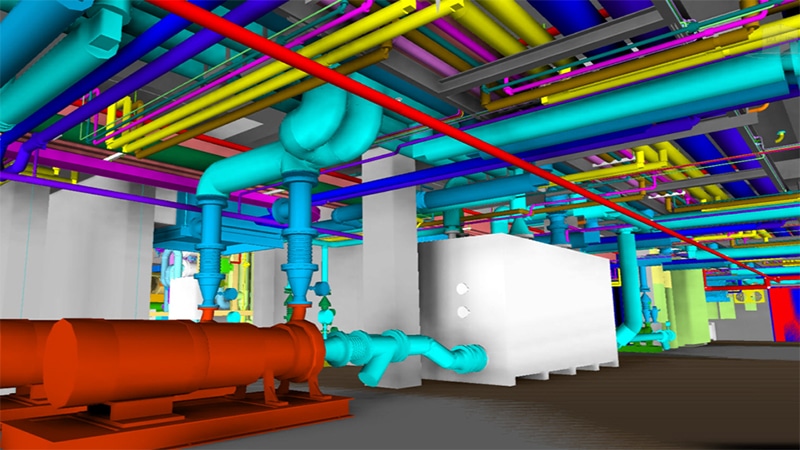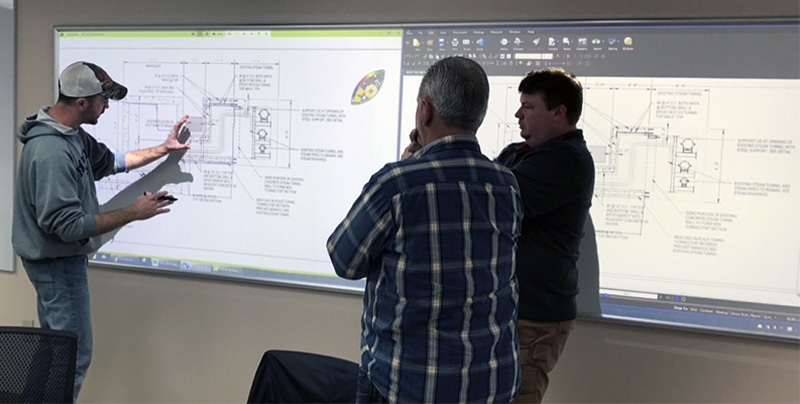Ted Jennings is the virtual design and construction (VDC) manager at construction firm Barton Malow. He’s also an expert in BIM execution planning (BIMxP).
If you’ve never heard of BIMxP, you’re not alone. Think of it like a playbook—an attack plan that an engineering and construction team prepares for a specific project. It’s also a living document; it can change as projects change.
Barton Malow kicks off most projects with its BIM execution planning process. By standardizing around this key process, the team is able to engage key stakeholders early on in a project regardless of delivery method or market.
“The goal of this document is to create a team structure, identify all the players, identify all the parties and get everything on the table so we are all moving in the same direction,” Jennings said.
What’s more, project teams are able to establish better PDF standards and drive workflows such as the use of Bluebeam Revu drawing sets with Revit metadata. Other key benefits include outlining core processes such as RFIs, submittals and 3D model coordination.
Jennings knows that the construction industry isn’t as innovative as other industries. “We get beat down a lot because everybody says we’re slower than hunting and fishing, like we’re not as innovative,” Jennings said. “And I’d say we’re actually making a lot of progress.”
Much of that progress, Jennings said, has been by way of BIM execution planning.
Jennings spoke about Barton Malow’s 34-page “Guide to BIM Execution Planning” and the model that the company has started to employ.
BIM execution planning checklist
Here’s how to create a BIM execution plan, according to Jennings:
First, make a project charter. This is a document that gets all stakeholders on the same page. “It doesn’t necessarily just need to be the VDC people,” Jennings said. “It should be the project operations team; it should be the architect or engineer and the client.”

“The goal of this,” Jennings added, “is again putting VDC, or the technology you want to use, on a jobsite in simple terms for stakeholders to be able to understand what their engagement should look like.”
Second, develop a simple use case checklist to be able to identify what the requirements are and what sort of return is to be expected—perhaps getting a submittal review period from 10 days down to five, for example.
Third, identify what parts of the workflow can be empowered by 2D standards and 3D standards, so that there are no big “surprises” in the middle of a job.
“Some of the 2D standards that are written into our BIM execution plan are 3D or 2D workflow,” Jennings said, “so specifically live Revit to PDF optimization where Bluebeam has a plugin for that, optimized PDFs would be making sure that they’re not too heavy with layers.”
Fourth, identify all the specific pieces of software and the types of dashboards you’re going to use, and make sure that you’re putting the right metrics on each dashboard for project communication.

Finally, keep it adaptable. “Don’t be constrained by what you think it should or shouldn’t be,” Jennings said. “Technology is constantly changing, so if it’s not adaptable, then it’s kind of pointless.”
“Everybody gets a new phone after two years,” Jennings added, “so you wouldn’t expect to use the same version of your BIM execution plan in two years, right?”
Expanding benefits of tech
Other aspects Jennings mentioned are using TrueType fonts and standardized title logs.
“Even if you’ve gone away from paper,” Jennings said, “one of the worst experiences you could’ve had in the field was having seven different sizes of drawings.”
Eventually, even if the team has gone digital, somebody is going to print out a drawing, Jennings said, and when there’s no uniformity of scale, it can get confusing.
BIMxP is catching on among industry leaders and is now being taught at more educational institutions, ensuring that the future generation of AEC will expand the benefits of technology.
At Stanford University’s Center for Integrated Facility Engineering, for instance, it has robust and intense VDC score cards for teams to use, Jennings said. Penn State University has also started rolling out BIM Execution Planning in its curriculum.











